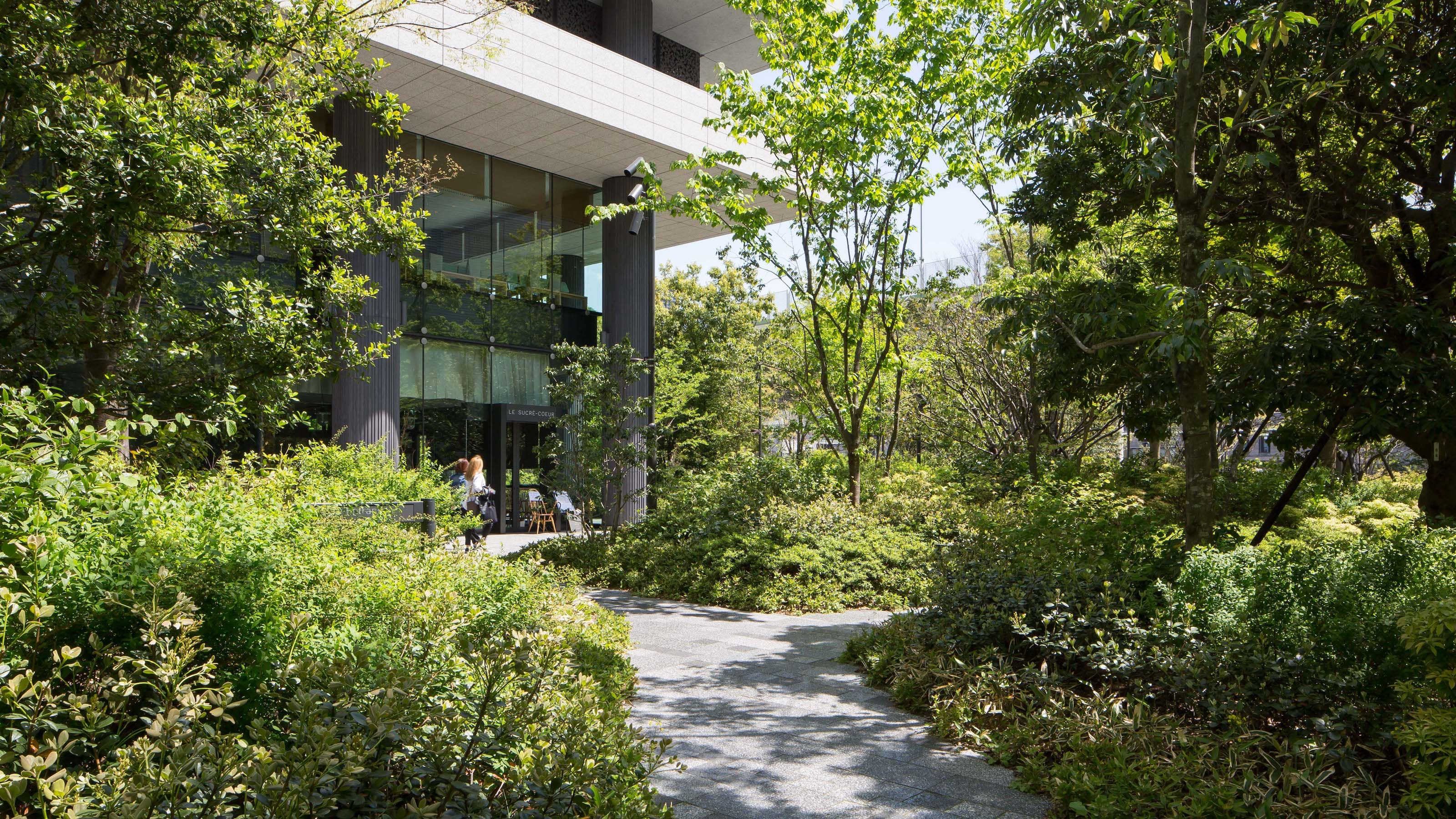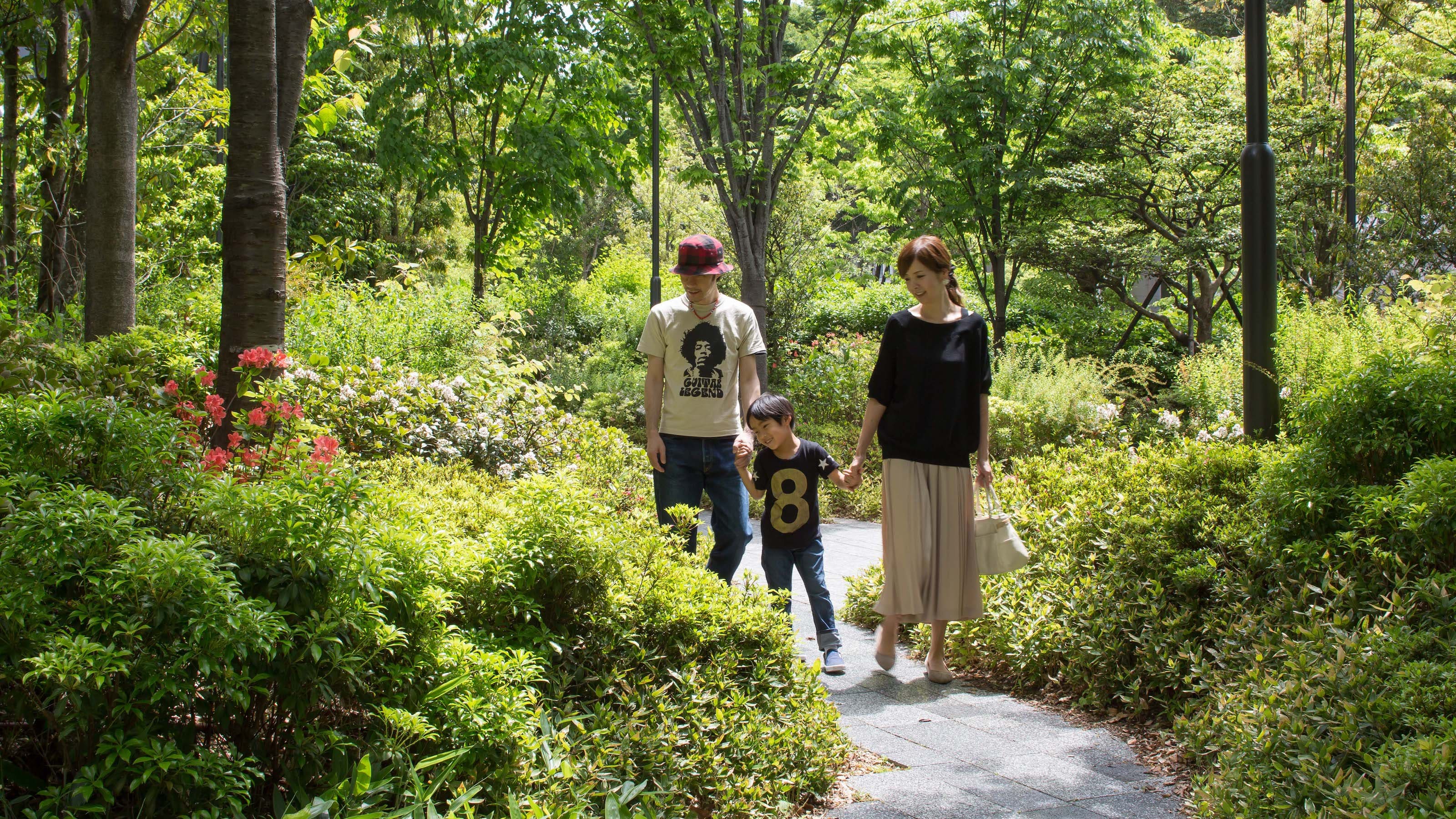Shin-Daibiru Building and Forest of Dojima: Landscape design that takes in the surrounding environment and context
Scroll Down
Abundant nature including greenery, waterside spaces, and beautiful terrain has a calming effect on people. Even in the city center with its buildings, infrastructure and other manmade structures, a rich nature adds color and energy to everyday life. And it not only speaks to people’s sensitivities, but also has good impacts on the surrounding living organisms and can also serve a role in curbing the heat island effect and mitigating disasters, among other issues.
The necessity of building new urban infrastructure has been decreasing as of late with the shrinking population. To that end, contrary to the sense of values of the era of high growth when the economy was top priority, a new sense of values that meets the needs of today’s age, namely, an urban space where each individual can enjoy their lives while in the city, is now necessary. It could be said that these factors are also behind the movement to create greenery in the city.
Nikken Sekkei is promoting greenery to create a rich environment and is engaged in various types of landscape design, both large and small. For each of the projects, the environment around the planned site and the context up to the current day are studied to provide a landscape design that suits the circumstances. Here we present a case study to introduce our concept of landscape design, its value, and the story up to its achievement.
CATEGORY
Shin-Daibiru Building and the Forest of Dojima: Recreating the beloved rooftop woods on the ground level

The process leading to the success of transplanting the rooftop greenery
A natural green space realized through adaptive management
